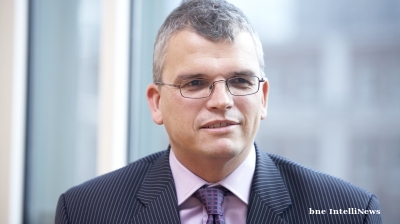With inflation settling down to single-digit levels and real wage growth slowly reaching positive territory, Russian consumers are finally beginning to feel a bit less pessimistic about their economic future, according to Sberbank CIB's latest Ivanov Consumer Confidence Index.
The Ivanov Index, named after the most common Russian surname, tracks the spending and overall mood of the country’s consumers.
The sixteenth instalment of the survey, compiled by Russia’s biggest bank, has for the first time shown an increase in each of its six indices, with confidence in prospects of personal wealth, country wealth, and the ability to make big ticket purchases all improving in the second quarter of 2016 compared with the first quarter.

In an emailed note, Sberbank describes “a bounce in the consumer confidence” in the second quarter “on the back of eased inflation concerns, reduced fears about the exchange rate, improved employment statistics and higher job security”.
The overall confidence index showed a marked improvement of five percentage points (pp) this quarter, up to -17%, while the outlook for personal wealth levels in the next twelve months crept into positive territory for the first time in over a year, climbing up to 1%, from -1% last quarter.
Rising wages and lower unemployment were the driving forces behind the mood improvement in Russia, with Sberbank noting that 25% of respondents got a pay rise in 2016, while unemployment fell from 12.1% last quarter to 11.3% in the latest round of polling. Job security has also improved, with the 39% of Ivanovs who are afraid of being fired down from 44% last quarter.


While conditions for the average Russian family have eased in the last three months, the index suggests that few Russians believe that the economy is completely out of the woods, with the “big purchase conditions” index still deep in negative territory, at -26%.
The figure does mark a slight uptick compared with last quarter’s -31%, and represents the second consecutive quarter of growth in this particular index. So while Mr or Mrs Ivanov are unlikely to pay for that kitchen refurbishment just yet, it would appear that many believe that their lot is indeed improving.

Despite losing over half of its value against the dollar in the last two years, the ruble now appears to have stabilised in the low-to-mid sixties per dollar range as oil prices too have begun to steady, at just below the $50 per barrel mark. As such, many Russians will now be able to budget for longer timeframes as currency volatility eases.
According to Sberbank, “shopping patterns continue to stabilize", with the average number of store visits per week growing from 1.1 in the first quarter of 2015 to 1.3 visits per week this year. However, the survey notes, “the share of price-sensitive respondents set another record", at 77% this quarter, following a then-record 76% in the previous period.
Data

Most Ukrainians reject Russian peace plan, back continued resistance, poll shows
An overwhelming majority of Ukrainians remain committed to resisting Russia’s invasion and reject Moscow’s latest peace proposals, even as many recognise that the war is unlikely to end soon, according to a new survey by the KIIS.

State of global democracy - Statista
The Economist Democracy Index rates countries on the state of their governing system each year. In the latest edition, corresponding to the year 2024, only 25 countries (6.6% of the world's population) have been rated as "full democracies"

Inflation wipes out wage gains in Romania as real incomes decline
Romanian households saw their purchasing power shrink in July as inflation outpaced wage growth.

Extreme poverty falling steadily – OWID
To track progress towards ending extreme poverty, the United Nations relies on World Bank estimates of the number of people living below a poverty threshold called the “International Poverty Line” (IPL), Our World in Data (OWID) reports.




